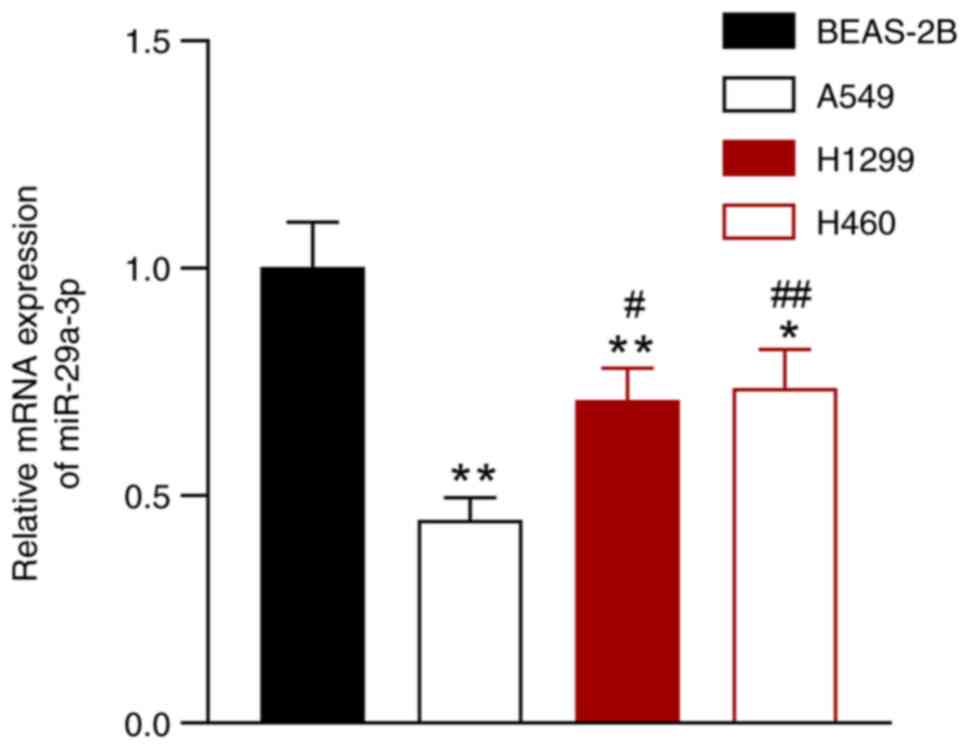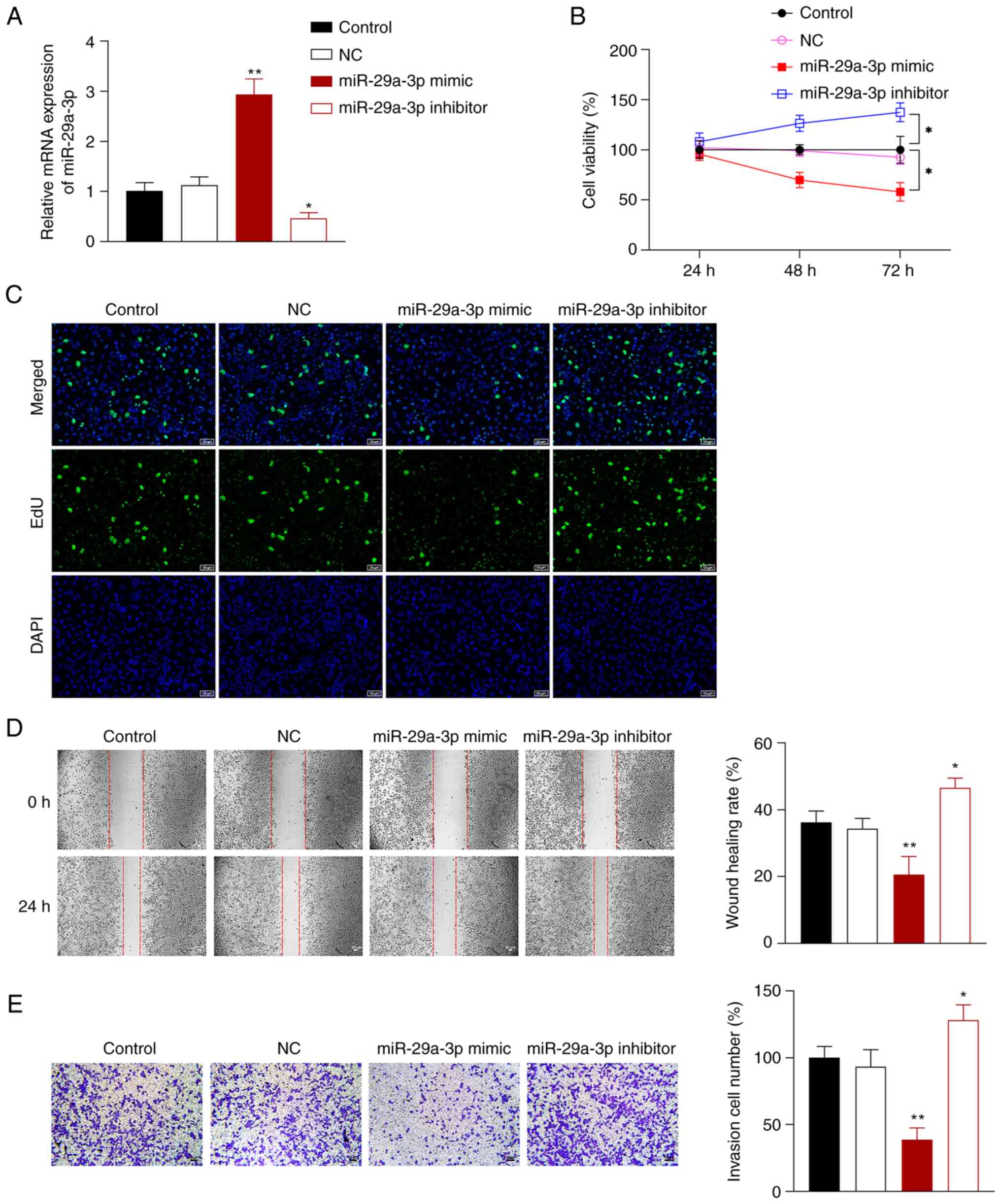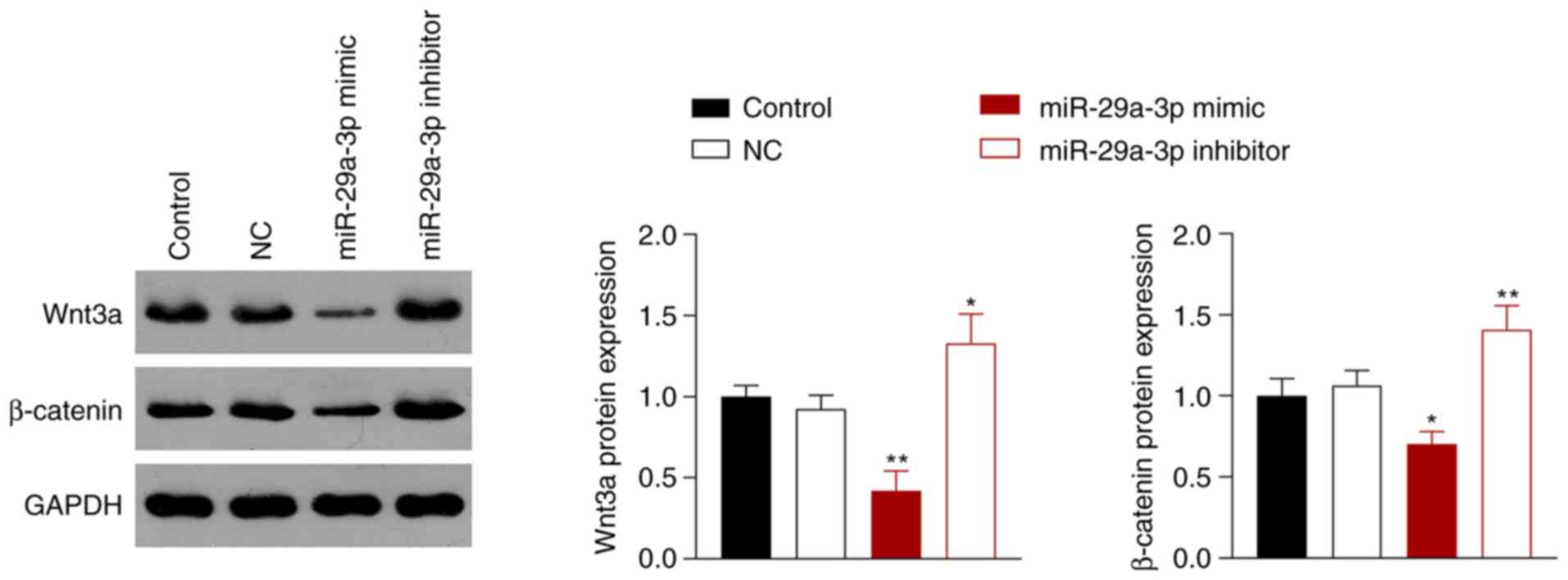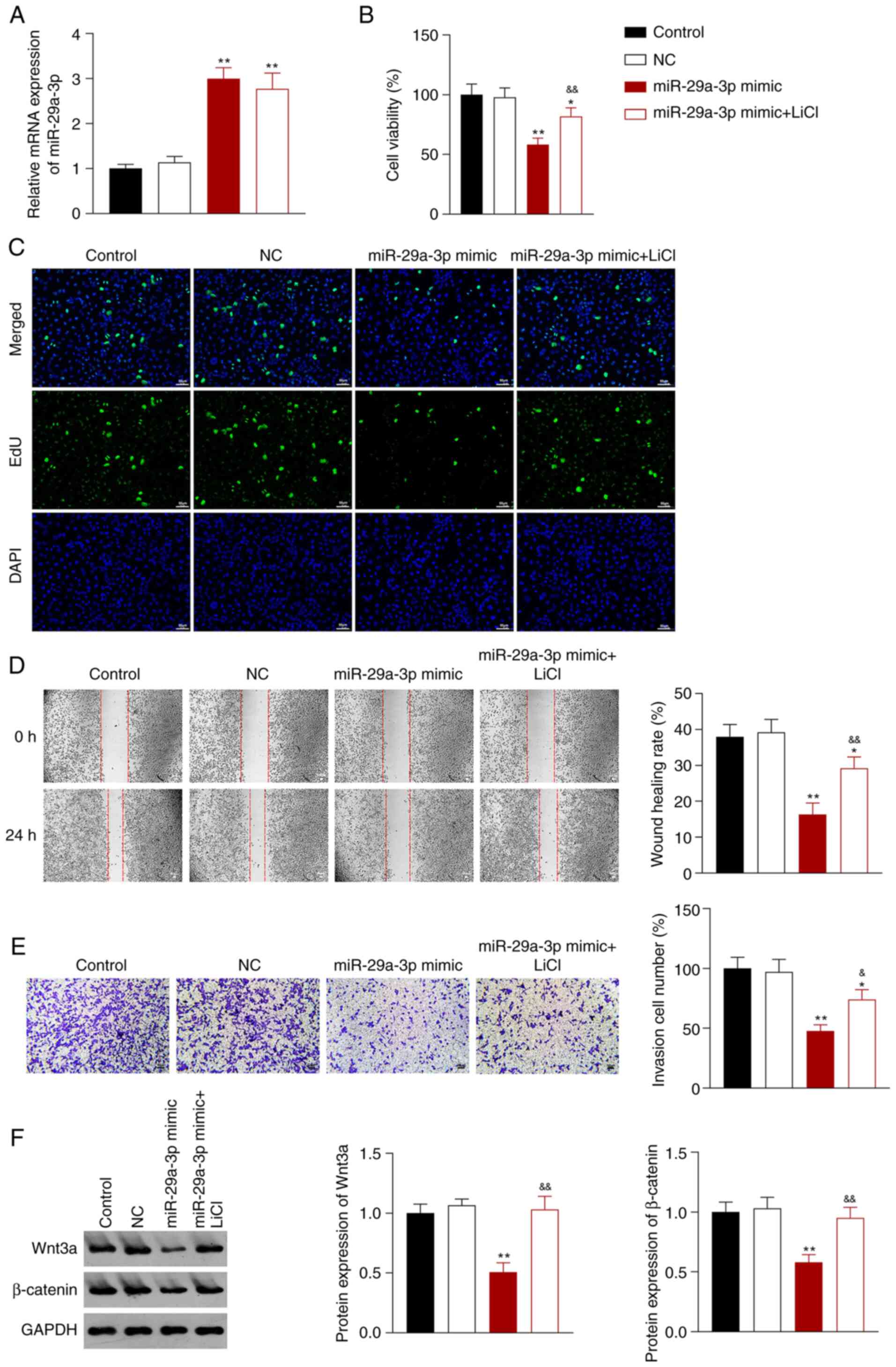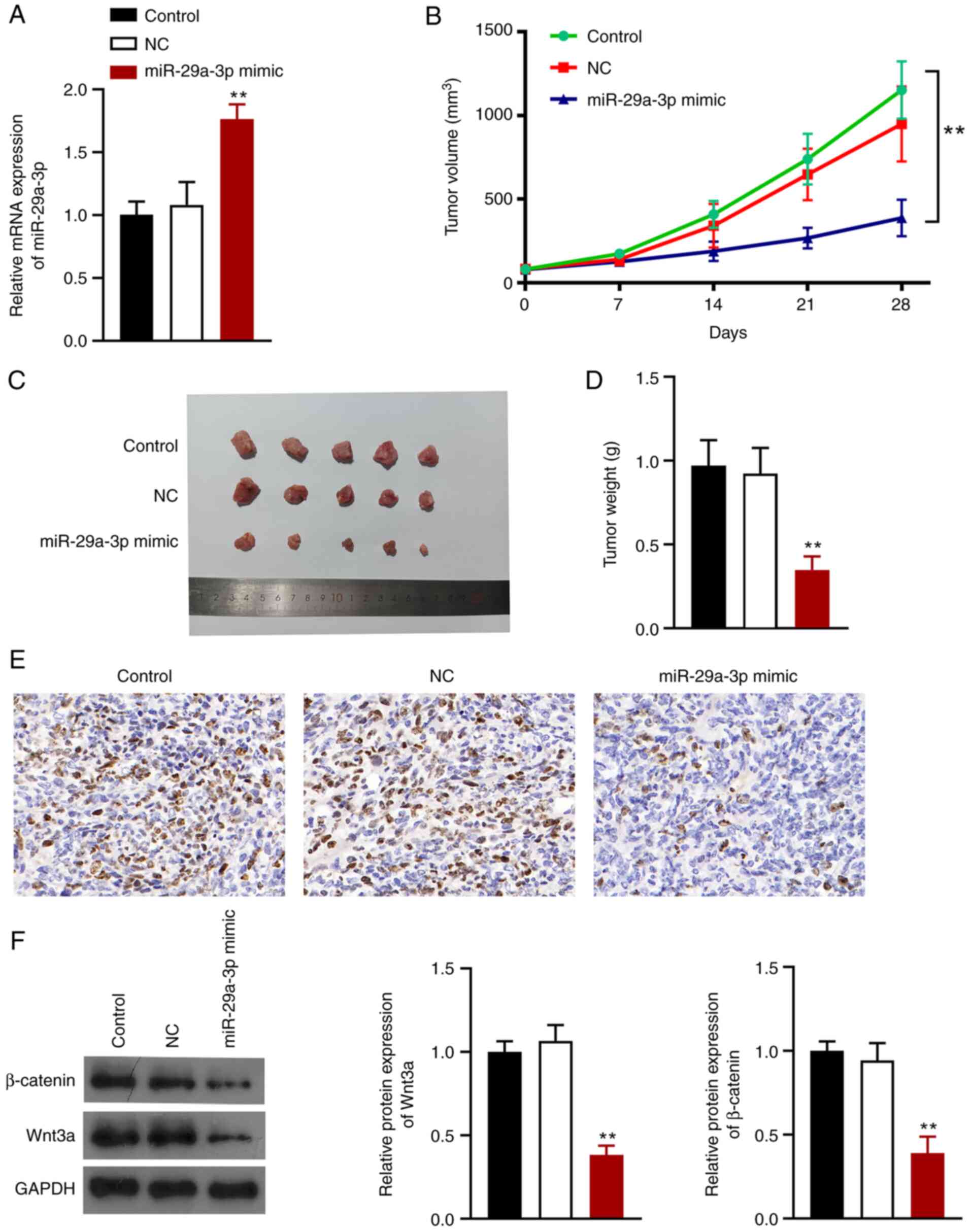|
1
|
Han H, Pan B, Liang F, Wu L, Liu X, Yang Y
and Chen J: MiR-224 promotes lymphatic metastasis by targeting
ANGPTL1 in non-small-cell lung carcinoma. Cancer Biomark.
34:431–441. 2022. View Article : Google Scholar : PubMed/NCBI
|
|
2
|
Yu W, Zhang X, Zhang W, Xiong M, Lin Y,
Chang M, Xu L, Lu Y, Liu Y and Zhang J: 19-Hydroxybufalin inhibits
non-small cell lung cancer cell proliferation and promotes cell
apoptosis via the Wnt/β-catenin pathway. Exp Hematol Oncol.
10:482021. View Article : Google Scholar : PubMed/NCBI
|
|
3
|
Wang R, Liu J, Li K, Yang G, Chen S, Wu J,
Xia X, Ren H and Pang Y: An SETD1A/Wnt/β-catenin feedback loop
promotes NSCLC development. J Exp Clin Cancer Res. 40:3182021.
View Article : Google Scholar : PubMed/NCBI
|
|
4
|
Liu YG, Li J, Nie F and Jin G: LINC00961
functions as an anti-oncogene in non-small cell lung carcinoma by
regulation of miR-3127. Am J Transl Res. 14:888–898.
2022.PubMed/NCBI
|
|
5
|
Xie Y, Xue C, Guo S and Yang L:
MicroRNA-520a suppresses pathogenesis and progression of
non-small-cell lung cancer through targeting the RRM2/Wnt axis.
Anal Cell Pathol (Amst). 2021:96524202021.PubMed/NCBI
|
|
6
|
Fan X, Tao S, Li Q, Deng B, Tan QY and Jin
H: The miR-23a/27a/24-2 cluster promotes postoperative progression
of early-stage non-small cell lung cancer. Mol Ther Oncolytics.
24:205–217. 2021. View Article : Google Scholar : PubMed/NCBI
|
|
7
|
Ye J, Feng H and Peng Z: miR-23a-3p
inhibits sepsis-induced kidney epithelial cell injury by
suppressing Wnt/β-catenin signaling by targeting wnt5a. Braz J Med
Biol Res. 55:e115712022. View Article : Google Scholar : PubMed/NCBI
|
|
8
|
Han S, Wang Z, Liu J, Wang HD and Yuan Q:
miR-29a-3p-dependent COL3A1 and COL5A1 expression reduction assists
sulforaphane to inhibit gastric cancer progression. Biochem
Pharmacol. 188:1145392021. View Article : Google Scholar : PubMed/NCBI
|
|
9
|
Wei Z, Wang W, Li Q, Du L and He X: The
microRNA miR-19a-3p suppresses cell growth, migration, and invasion
in multiple myeloma via the Wnt/β-catenin pathway. Transl Cancer
Res. 10:1053–1064. 2021. View Article : Google Scholar : PubMed/NCBI
|
|
10
|
Li Z, Li D and Yin GQ: MiR-19b-3p promotes
tumor progression of non-small cell lung cancer via downregulating
HOXA9 and predicts poor prognosis in patients. Histol Histopathol.
Mar 11–2022.(Epub ahead of print).
|
|
11
|
Yu B, Pang J and You J: Effects and
mechanism of miR-133a on invasion and migration of lung cancer
cells. Am J Transl Res. 14:728–739. 2022.PubMed/NCBI
|
|
12
|
Zhang Y and Hu X: miR-148a promotes cell
sensitivity through downregulating SOS2 in radiation-resistant
non-small cell lung cancer cells. Oncol Lett. 23:1352022.
View Article : Google Scholar : PubMed/NCBI
|
|
13
|
Geng A, Luo L, Ren F, Zhang L, Zhou H and
Gao X: miR-29a-3p inhibits endometrial cancer cell proliferation,
migration and invasion by targeting VEGFA/CD C42/PAK1. BMC Cancer.
21:8432021. View Article : Google Scholar : PubMed/NCBI
|
|
14
|
Zheng Z, Cui H, Wang Y and Yao W:
Downregulation of RPS15A by miR-29a-3p attenuates cell
proliferation in colorectal carcinoma. Biosci Biotechnol Biochem.
83:2057–2064. 2019. View Article : Google Scholar : PubMed/NCBI
|
|
15
|
Zhang H, Wang Y and Ding H: COL4A1,
negatively regulated by XPD and miR-29a-3p, promotes cell
proliferation, migration, invasion and epithelial-mesenchymal
transition in liver cancer cells. Clin Transl Oncol. 23:2078–2089.
2021. View Article : Google Scholar : PubMed/NCBI
|
|
16
|
Hayat R, Manzoor M and Hussain A: Wnt
signaling pathway: A comprehensive review. Cell Biol Int.
46:863–877. 2022. View Article : Google Scholar : PubMed/NCBI
|
|
17
|
Fang Z, Zhong M, Zhou L, Le Y, Wang H and
Fang Z: Low-density lipoprotein receptor-related protein 8
facilitates the proliferation and invasion of non-small cell lung
cancer cells by regulating the Wnt/β-catenin signaling pathway.
Bioengineered. 13:6807–6818. 2022. View Article : Google Scholar : PubMed/NCBI
|
|
18
|
Yi Q, Miao Y, Kong Y, Xu Y, Zhou J, Dong Q
and Liu H: MiR-579 inhibits lung adenocarcinoma cell proliferation
and metastasis via binding to CRABP2. Comput Math Methods Med.
2022:91116812022. View Article : Google Scholar : PubMed/NCBI
|
|
19
|
Ng L, Wan TM, Iyer DN, Huang Z, Sin RW,
Man AT, Li X, Foo DC, Lo OS and Law WL: High levels of tumor
miR-187-3p-a potential tumor-suppressor microRNA-are correlated
with poor prognosis in colorectal cancer. Cells. 11:24212022.
View Article : Google Scholar : PubMed/NCBI
|
|
20
|
Dai F, Xiu Z, Yang Q, Zhong Z, Zhong C and
Qiu Y: MicroRNA-375 inhibits laryngeal squamous cell carcinoma
progression via targeting CST1. Braz J Otorhinolaryngol. Jul
6–2022.(Epub ahead of print). View Article : Google Scholar
|
|
21
|
Hao X and Su A: MiR-590 suppresses the
progression of non-small cell lung cancer by regulating YAP1 and
Wnt/β-catenin signaling. Clin Transl Oncol. 24:546–555. 2022.
View Article : Google Scholar : PubMed/NCBI
|
|
22
|
Liu B, Zhang R, Zhu Y and Hao R:
Exosome-derived microRNA-433 inhibits tumorigenesis through
incremental infiltration of CD4 and CD8 cells in non-small cell
lung cancer. Oncol Lett. 22:6072021. View Article : Google Scholar : PubMed/NCBI
|
|
23
|
Wang Y, Wang L, Guo J, Zuo S, Wang Z and
Hua S: MYPT1, regulated by miR-19b-3p inhibits the progression of
non-small cell lung cancer via inhibiting the activation of
wnt/β-catenin signaling. Life Sci. 278:1195732021. View Article : Google Scholar : PubMed/NCBI
|
|
24
|
Li W, Meng Z, Zou T, Wang G, Su Y, Yao S
and Sun X: MiR-374a activates Wnt/β-catenin signaling to promote
osteosarcoma cell migration by targeting WIF-1. Pathol Oncol Res.
26:533–539. 2020. View Article : Google Scholar : PubMed/NCBI
|
|
25
|
Livak KJ and Schmittgen TD: Analysis of
relative gene expression data using real-time quantitative PCR and
the 2(−Delta Delta C(T)) method. Methods. 25:402–408. 2001.
View Article : Google Scholar : PubMed/NCBI
|
|
26
|
Wu Y, Zhang J, Yun C, Dong C and Tian Y:
Effects of afatinib on development of non-small-cell lung cancer by
regulating activity of Wnt/β-catenin signaling pathway. Comput Math
Methods Med. 2022:52130162022. View Article : Google Scholar : PubMed/NCBI
|
|
27
|
Zhang P, Li L, Wang B, Ran X, Yang Z, Liu
Y and Zhu B: miR-489-3p promotes malignant progression of non-small
cell lung cancer through the inactivation of Wnt/β-catenin
signaling pathway via regulating USP48. Respir Res. 23:932022.
View Article : Google Scholar : PubMed/NCBI
|
|
28
|
Lin G, Lin L, Lin H and Xu Y, Chen W, Liu
Y, Wu J, Chen S, Lin Q, Zeng Y and Xu Y: C1QTNF6 regulated by
miR-29a-3p promotes proliferation and migration in stage I lung
adenocarcinoma. BMC Pulm Med. 22:2852022. View Article : Google Scholar : PubMed/NCBI
|
|
29
|
Chen X, Li X, Wei C, Zhao C, Wang S and
Gao J: High expression of SETDB1 mediated by miR-29a-3p associates
with poor prognosis and immune invasion in breast invasive
carcinoma. Transl Cancer Res. 10:5065–5075. 2021. View Article : Google Scholar : PubMed/NCBI
|
|
30
|
Li Y, Lin LZ, Guan JS, Chen CM, Zuo Q and
Lin BQ: TCM combined western medicine treatment of advanced NSCLC:
A preliminary study of mIRNA expression profiles. Zhongguo Zhong Xi
Yi Jie He Za Zhi. 36:1076–1081. 2016.(In Chinese). PubMed/NCBI
|
|
31
|
Yan Y, Du C, Duan X, Yao X, Wan X, Jiang
Z, Qin Z, Li W, Pan L, Gu Z, et al: Inhibiting collagen I
production and tumor cell colonization in the lung via miR-29a-3p
loading of exosome-/liposome-based nanovesicles. Acta Pharm Sin B.
12:939–951. 2022. View Article : Google Scholar : PubMed/NCBI
|
|
32
|
Li D, Xu M, Wang Z, Huang P, Huang C, Chen
Z, Tang G, Zhu X, Cai M and Qin S: The EMT-induced lncRNA NR2F1-AS1
positively modulates NR2F1 expression and drives gastric cancer via
miR-29a-3p/VAMP7 axis. Cell Death Dis. 13:842022. View Article : Google Scholar : PubMed/NCBI
|
|
33
|
Zhang S, Xiang X, Liu L, Yang H, Cen D and
Tang G: Bioinformatics analysis of hub genes and potential
therapeutic agents associated with gastric cancer. Cancer Manag
Res. 13:8929–8951. 2021. View Article : Google Scholar : PubMed/NCBI
|
|
34
|
Muluhngwi P and Klinge CM: Identification
and roles of miR-29b-1-3p and miR29a-3p-regulated and non-regulated
lncRNAs in endocrine-sensitive and resistant breast cancer cells.
Cancers (Basel). 13:35302021. View Article : Google Scholar : PubMed/NCBI
|
|
35
|
Xu H, Tang Y, He C, Tian Y and Ni R:
Prognostic value of lncRNA HOXA-AS3 in cervical cancer by targeting
miR-29a-3p and its regulatory effect on tumor progression. J Obstet
Gynaecol Res. Jul 11–2022.(Epub ahead of print). View Article : Google Scholar
|
|
36
|
Pan H, Ding Y, Jiang Y, Wang X, Rao J,
Zhang X, Yu H, Hou Q and Li T: LncRNA LIFR-AS1 promotes
proliferation and invasion of gastric cancer cell via
miR-29a-3p/COL1A2 axis. Cancer Cell Int. 21:72021. View Article : Google Scholar : PubMed/NCBI
|
|
37
|
Wang X, Liu S, Cao L, Zhang T, Yue D, Wang
L, Ping Y, He Q, Zhang C, Wang M, et al: miR-29a-3p suppresses cell
proliferation and migration by downregulating IGF1R in
hepatocellular carcinoma. Oncotarget. 8:86592–86603. 2017.
View Article : Google Scholar : PubMed/NCBI
|
|
38
|
Chen Y, Zhang W, Yan L, Zheng P and Li J:
miR-29a-3p directly targets Smad nuclear interacting protein 1 and
inhibits the migration and proliferation of cervical cancer HeLa
cells. PeerJ. 8:e101482020. View Article : Google Scholar : PubMed/NCBI
|
|
39
|
Liu S, Liu D, Liu J, Liu J and Zhong M:
miR-29a-3p promotes migration and invasion in ameloblastoma via
Wnt/β-catenin signaling by targeting catenin beta interacting
protein 1. Head Neck. 43:3911–3921. 2021. View Article : Google Scholar : PubMed/NCBI
|
|
40
|
Han SH, Han JH, Chun WJ, Lee SS, Kim HS
and Lee JW: Nobiletin inhibits non-small-cell lung cancer by
inactivating WNT/β-catenin signaling through downregulating
miR-15-5p. Evid Based Complement Alternat Med. 2021:77829632021.
View Article : Google Scholar : PubMed/NCBI
|
|
41
|
Shi Y, Ge C, Fang D, Wei W, Li L, Wei Q
and Yu H: NCAPG facilitates colorectal cancer cell proliferation,
migration, invasion and epithelial-mesenchymal transition by
activating the Wnt/β-catenin signaling pathway. Cancer Cell Int.
22:1192022. View Article : Google Scholar : PubMed/NCBI
|















